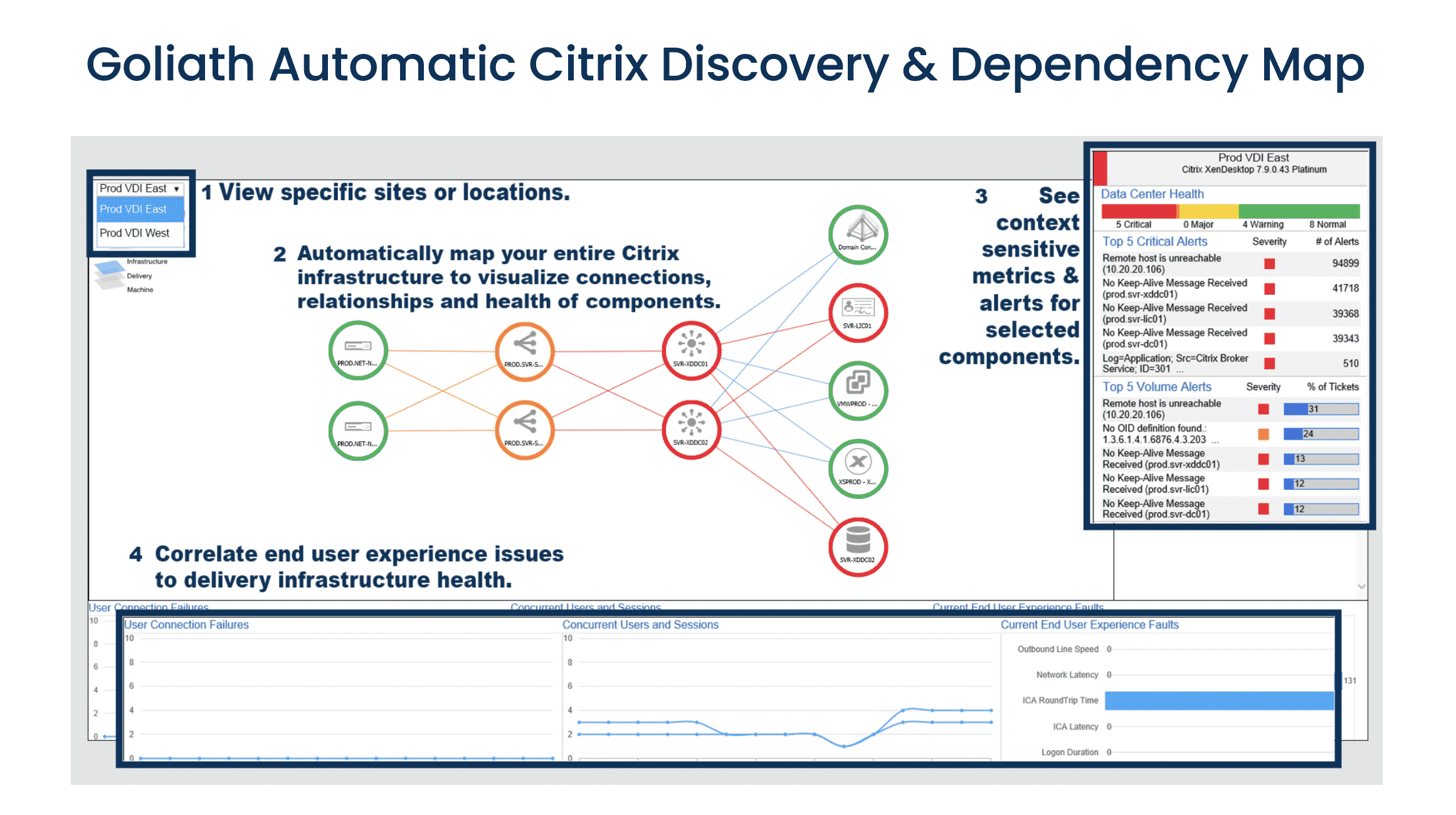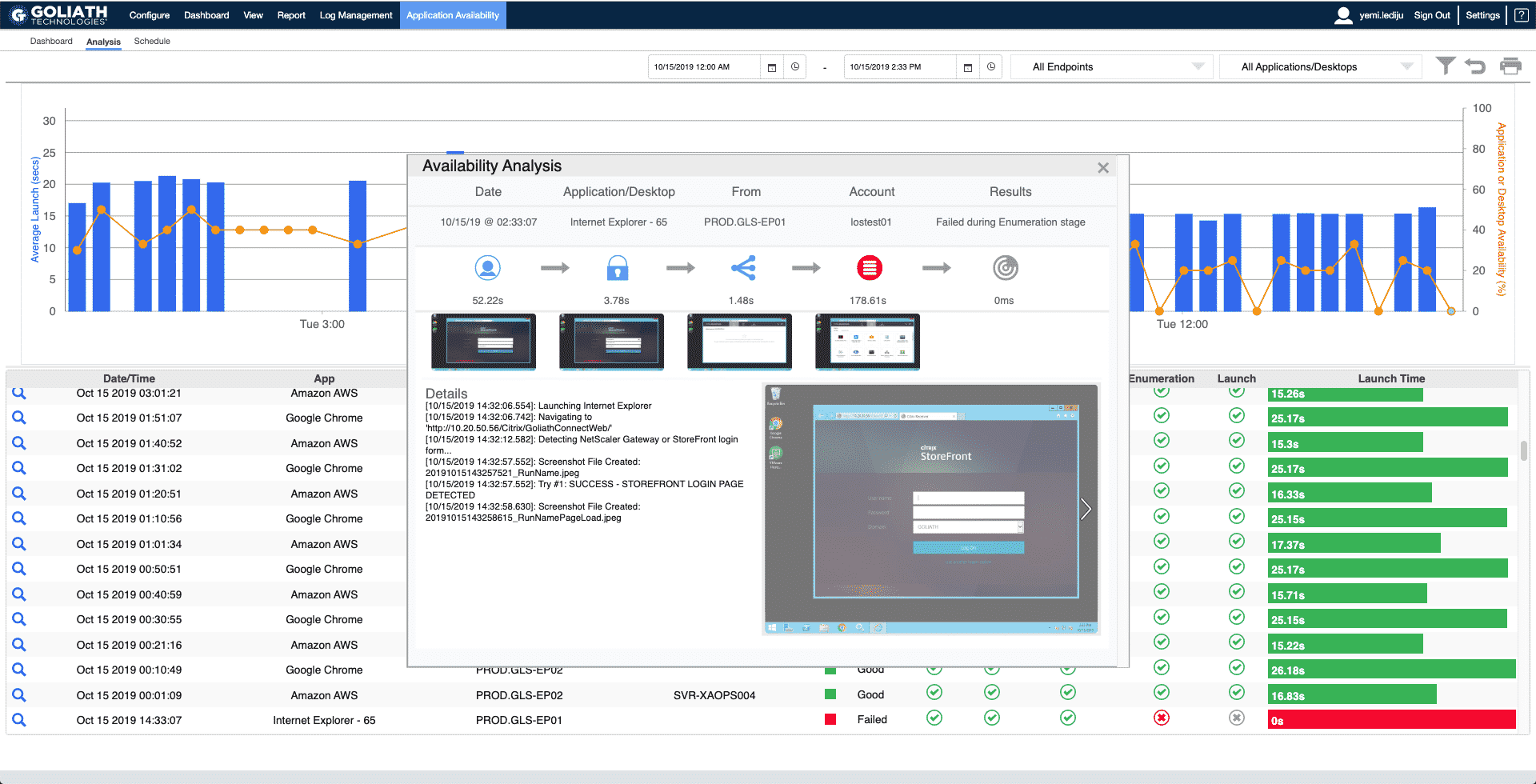Healthcare environments must ensure application availability around the clock to serve the needs of their patients. In many hospitals, while they serve patients 24×7, there is typically a lighter overnight load, but by the time the sun rises, healthcare teams start staffing in full force. Oftentimes applications in healthcare are deployed via Citrix, so you will have your EHR running on Citrix. The Citrix infrastructure can be complex and adding an EHR application such as EPIC can make early morning health checks take a long time. In this article, let’s look at my experiences completing that early morning health check of Citrix and an EHR application with native toolsets. Then let’s more specifically dive into ways to ensure that your Citrix servers serving up your EHR to the enterprise are ready to support the patients you care for every day.
It’s a new day – health checks!
In the past, when on-call that team member would be responsible for checking the health of the environment which wasn’t a small task. To ensure everything all applications including your EHR running on Citrix is functional each day here is the checklist of what needed to be assessed.
- Check email to identify potentially hung Citrix Servers: Two custom PowerShell scripts were run via scheduled task each day to check the uptime of each Citrix server, and to provide a list of disconnected sessions for review.
- Citrix Director Review: Opened the Citrix monitoring tool to assess any potential issues.
- EHR monitoring tools: Beyond Citrix, the EHR provider offered a separate console that could provide some insights into the overall health of the EHR application infrastructure.
Beyond leveraging these many different consoles, additional manual checks were often required depending on what was identified in the console. Then remediating any issues found to make sure that the systems were all online and functional before the thousands of healthcare staff and patients that would be reliant upon these systems throughout the day.
Phew! Whatever happened to simple?
In the end we were using a multitude of tools that created more work for the team with the misguided perception that we were saving money by not buying a 3rd party tool. The unfortunate truth was that a lot of money was being spent on the team’s valuable time, and in some cases didn’t always ensure that the environment was online for the day which equaled more dollars lost. While there was a procedure, this is a prime example of how monitoring Citrix and EHR software, without the right tool for the job, doesn’t guarantee system availability or that the lack there of would be identifiable. Native monitoring doesn’t provide a single pane of glass or provide a real way to be truly proactive. Even though we had time to fix the issues before the work day it was clear there had to be a better way to monitor our EHR running on Citrix.
Proactive Real-time Monitoring for EHR Running on Citrix
Is there really a way to do proactive real-time monitoring of your Citrix environment that hosts your EHR deployment? Goliath Technologies has a way to do this. Not only can you be running proactive monitoring round the clock and be alerted when it fails, your teams will now have the ability to get visual feedback on each screen that applies to the user connection clearly leading the infrastructure administrator to what is successful, but more importantly what is failing. Simplifying what it takes to ensure both your Citrix and EHR deployments are always available 24×7. Let’s take a look at Figure 1 and Figure 2 below to get a better understanding of how this works.
Figure 1
Shows how simple it is to understand at a glance where there may be issues in your Citrix VDI deployment, and how simple it is to click into the map to know where troubleshoot issues in your environment.

Figure 2
Shows availability analysis and how you can gain visual insights and screenshot evidence of the user experience, so that it’s clearer what needs to be resolved. Gaining insights into the user errors removing the dependency for a user to be available before troubleshooting can occur.

Goliath Technologies offers purpose-built modules for EHR applications such as Epic, Cerner, MEDITECH, and Allscripts that enables health IT teams to see monitoring information from these applications combined with metrics from the IT delivery infrastructure layer (Citrix, VMware Horizon, etc.), as well as with end user behavior details for healthcare application delivery success.
Learn how Universal Health Services leverage Goliath’s availability and performance monitoring every day to ensure patient-critical applications and records are always available.
Sponsored by Goliath Technologies
Goliath Technologies solution is the only monitoring and troubleshooting workspace tool that is deployed in Cerner RHO, Certified in the Epic App Orchard program and validated by MEDITECH and Allscripts customers.


